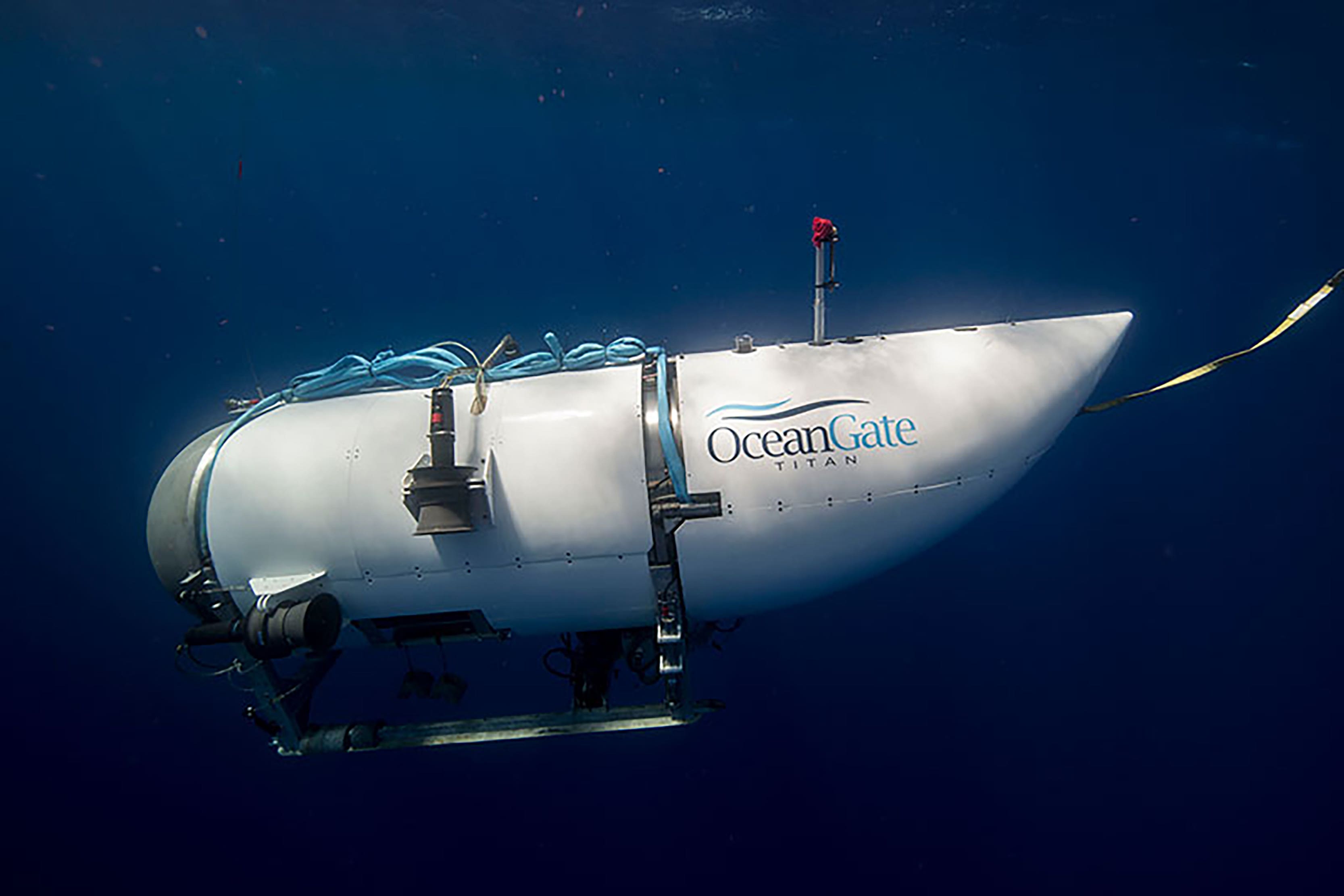‘Debris field’ found within search area for missing deep-sea vessel
A remotely-operated vehicle made the discovery near the wreckage of the Titanic on Thursday.

Your support helps us to tell the story
From reproductive rights to climate change to Big Tech, The Independent is on the ground when the story is developing. Whether it's investigating the financials of Elon Musk's pro-Trump PAC or producing our latest documentary, 'The A Word', which shines a light on the American women fighting for reproductive rights, we know how important it is to parse out the facts from the messaging.
At such a critical moment in US history, we need reporters on the ground. Your donation allows us to keep sending journalists to speak to both sides of the story.
The Independent is trusted by Americans across the entire political spectrum. And unlike many other quality news outlets, we choose not to lock Americans out of our reporting and analysis with paywalls. We believe quality journalism should be available to everyone, paid for by those who can afford it.
Your support makes all the difference.A “debris field” has been discovered within the search area for the missing Titan submersible.
The US Coast Guard (USCG) said a remotely-operated vehicle (ROV) made the discovery near the wreckage of the Titanic on Thursday.
The hunt for the missing deep-sea vessel is still an “active search and rescue” mission after it lost communication on Sunday.
According to reports, the debris found was that of the “landing frame and cover” of the missing submersible.
The vessel was about 435 miles south of St John’s, Newfoundland, during a voyage to the Titanic shipwreck off the coast of Canada.
USCG officials said they were “evaluating the information” following Thursday’s debris discovery.
A press conference will be held at the Coast Guard base in Boston to “discuss the findings” at 8pm UK time.
Rear Admiral John Mauger, First Coast Guard District commander, and Captain Jamie Frederick, First Coast Guard District response coordinator, will lead the press conference.
Founding member of the Board of Trustees of The Explorers Club, Hamish Harding, was on board the undersea craft, alongside UK-based businessman Shahzada Dawood, his son Suleman Dawood, and OceanGate’s chief executive and founder Stockton Rush, as well as French submersible pilot Paul-Henri Nargeolet.
The USCG said the ROV that made the discovery was from the Canadian Horizon Arctic ship – with the debris being found on the sea floor near the Titanic wreckage.
David Mearns, a UK-based marine scientist and oceanographer who specialises in searching for shipwrecks – and who is a friend of British billionaire Mr Harding who is aboard the missing craft, told Sky News and the BBC the debris is from Titan.
Mr Mearns told Sky News he had been contacted by the president of The Explorers Club, which Mr Harding belongs to, saying: “It was a landing frame and a rear cover from the submersible.”
The US Coast Guard said it was not commenting on what the debris consisted of.
Assistance from the Royal Air Force (RAF) is due to arrive in St John’s on Thursday after it confirmed a request was received overnight for help with movement of additional commercial equipment.
Two RAF planes, a C-17 Globemaster and A400 Atlas, departed RAF Lossiemouth in north-east Scotland on Thursday.
A British submariner and equipment from a UK firm has been sent to help the search at the request of the US Coastguard, Downing Street said.
Royal Navy submariner Lieutenant Commander Richard Kantharia, who was on exchange with the US Navy, has been seconded to the search and rescue team.
OceanGate Expeditions estimated the oxygen supply on the 6.7m (22ft)-long vessel would last 96 hours, giving rescuers a deadline of around midday on Thursday.
Experts said the chances of finding the sub and rescuing those inside was diminishing.
Former Royal Navy submarine captain Ryan Ramsey told the PA news agency: “The outlook is bleak, that’s the only word for it as this tragic event unfolds and almost the closing stages of where this changes from rescue to a salvage mission.”
Titan is believed to be about 900 miles east and 400 miles south of Newfoundland.
It is not known how deep the vessel is, with the seabed being around 3,800m from the surface.